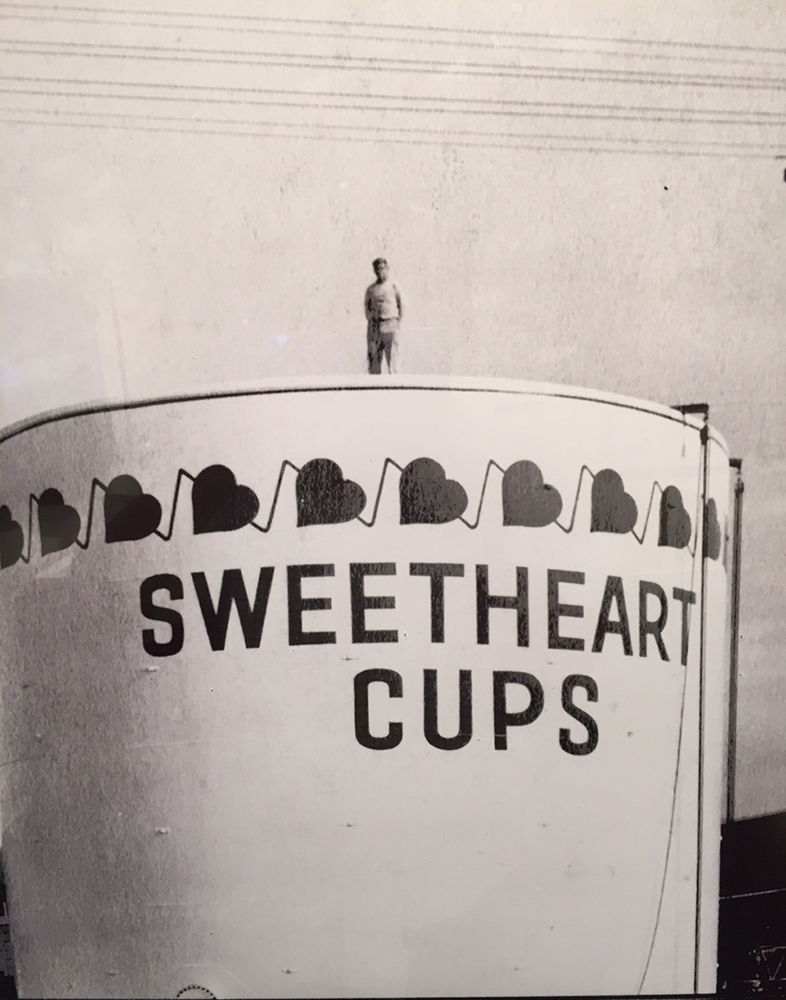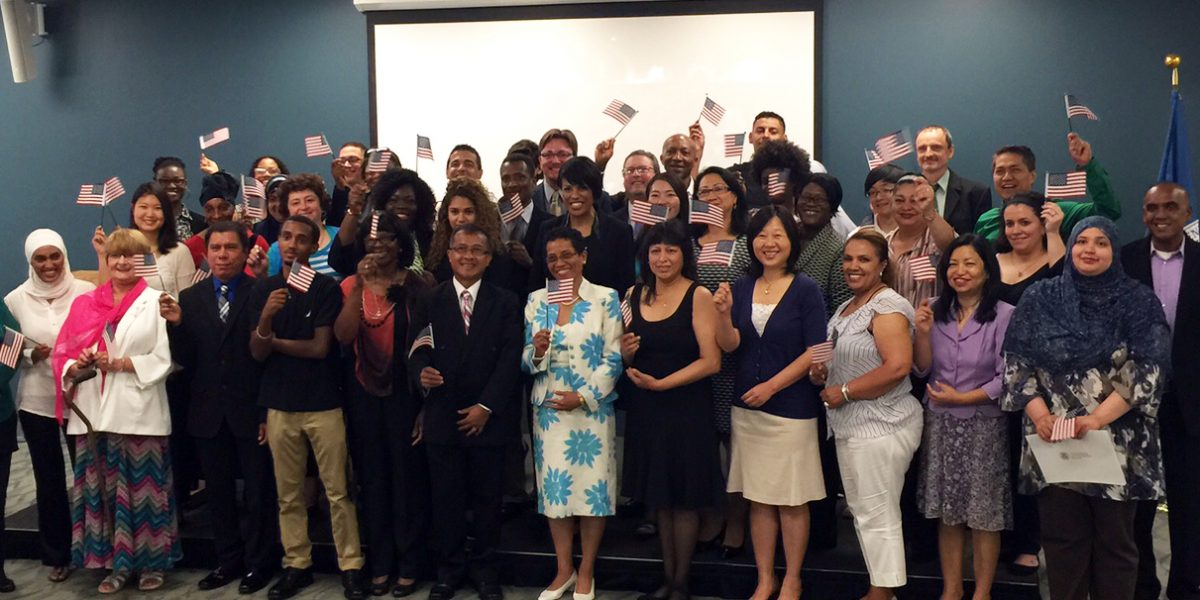News & Community
The Chatter: September 2015
Overheard from Maryland Sign Painters, U.S. Citizenship Ceremony, and Normal's Books
Land of the Free
June 25, 2015
Koppers Street
“Brazil, Burma, Cameroon . . . ,” Greg Collett, U.S. Citizenship and Immigration Services district director, calls out 26 countries in alphabetical order until 39 would-be citizens are on their feet. Mayor Stephanie Rawlings-Blake has already made some opening remarks, noting the difficult time Baltimore has been through recently, informing those about to become Americans that the strength and resiliency they’ve already demonstrated will be needed. After a brief history of “The Star-Spangled Banner,” those standing are asked to place their right hands over their hearts and recite the Pledge of Allegiance.
Following a videotaped welcome from President Barack Obama, the newly naturalized U.S. citizens—surrounded by family and dressed in their holiday best—burst into spontaneous cheers, waving the tiny flags they’ve been given over their heads. A few are moved to tears. “I’m very happy after all these years,” says Maria Suarez, a Peruvian immigrant and mother, who was separated for years from her husband. “Triste [sad],” she says of that time, breaking into Spanish and smiling while wiping the corners of her eyes. “Many difficult nights.” Nearby, in a camouflage uniform, Mexican-born Haroldo Palma receives high-fives from U.S. Army buddies.
Upfront, Oyindamola Ikujuni, a vivacious Nigerian-born mother of three, is celebrating both her citizenship and her 36th birthday today. Asked what she likes most about America, she beams. “The freedom,” she says. “And the roads.”
Signs of Life
June 18, 2015
Key Highway
“I run a lot, and the first time I turned down Bond Street and saw the Bond Street Wharf sign, I was blown away by the scale and color,” says Samantha Redles, at the Baltimore Museum of Industry, explaining the inspiration for her pop-up exhibition, Not Yet Lost! The Art of Maryland Sign Painters. “I knew there was a person who did that, who was behind that sign.”
The three-story, BOND STREET WHARF lettering—integrated into the former warehouse’s architecture and reappointed brick—was painted in 2008 by Brendon Brandon, whose efforts over the past half-century include other historic renovations, like the E.J. Codd building, also in Fells Point. As part of the exhibit here, organized by Redles for her Maryland Institute College of Art Curatorial Practice thesis, there’s also a screening tonight of the 2013 documentary Sign Painters, which recounts the craft’s heyday and unsung mid-century practitioners before the mass adoption of vinyl lettering.
“It’s definitely viewed as blue-collar, but it offered the chance to be creative and work with your hands,” says Redles, whose show highlights six Maryland painters, including Clifford Olson. His best-known work included the whimsical Cloud Mattress mural on the company’s former Guilford Avenue factory, since gone condo. Restored and visible from I-83, the painting depicts a woman lying alone in bed in a negligee and curlers, levitating above the city at night.
As a 14-year-old in 1934, armed with his paintbrushes, Olson had hopped a freight train out of his Nebraska hometown, ultimately landing in Baltimore. “Dad didn’t quit until he was 76, after a stroke,” his son Ole says later. “Worked all those years on swinging scaffolding without a safety line, shoveling snow off in the winter. I helped him sometimes in high school. He’d tell me, ‘You’ll be fine. Hold onto the brush.’”
Business as Usual
July 11, 2015
East 31st Street
Like the ephemera sitting in the front windows—the papier-mâché bunny and evil clown dolls, the used hardcover on tiny surrealism and ’80s vinyl from Afrika Bambaataa—Normal’s Books & Records wasn’t expected to survive the digital revolution, let alone celebrate its silver anniversary. But crowded among the teetering stacks of books and bric-a-brac this afternoon, a real clown named Norma plays a kazoo as a young dad with dreadlocks tries to corral his son and two men peruse albums and recall Left Bank Jazz Society shows at Baltimore’s old Famous Ballroom. At the same time, in the store’s backroom performance space, called the Red Room—which is blue, of course—an a cappella Sacred Harp choir is following a raucous noise band to the floor.
The shop’s motto, co-owner Rupert Wondolowski notes, has always been “everything from the obscure to the indispensable.” Its name comes from paid study work several of the early store founders did with the Baltimore Psychiatric Research Center—where control subjects in schizophrenia investigations were referred to as “normals.”
“We started two doors down in a smaller space, but not a lot else has changed,” Wondolowski says. “We did sell vintage bikes and clothes, but ran out of room for that. The first year, it’s true, John Waters bought a bike here. This was before iPhones, so I don’t have a picture, but in my mind, I can still see him wobbling off down the street in ragged glory.”
